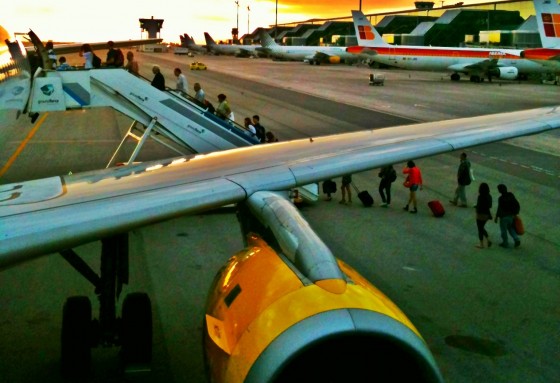As a fairly frequent traveler, one of my biggest frustrations when planning a trip is when the ticket fares that I have been watching for weeks suddenly change.
If I’m lucky, the final ticket price would go up by a few euros, so the damage is relativelly small. However, there have been a few times when the ticket price change has been so high that I’ve been forced to change my dates or the destination altogether.
While Murphy’s Law is usually the theory best used to explain why airline tickets go up, the truth is that there is (somewhat of) a logic behind these fluctuatuions. However, very much like the recipe for Coca-Cola, the algorithm used by carriers to change the prices for their tickets is a secret. What’s even worse, each airline has a different system and approach when it comes to benchmarking, yield-management and pricing, so there’s not a one-size-fits-all formula to determine when will a ticket fare go up.
There are, however, certain indications that can help us predict changes on ticket prices.
The first thing to do is stop thinking like consumers and start to use the perspective of airlines.
Operating Costs
The costs of operating a flight between London and Sao Paulo, for instance , can vary greatly from day to day . While aircraft maintenance costs, employees salaries, marketing expenses and other costs of this nature tend to stay stable, other costs fluctuate greatly.
Among airlines’ operational costs, the most volatile, and the one with the greater impact on the final ticket price is definitely fuel.
Almost invariably, a rise in the price of oil means higher prices for airfares.
Other variable operating costs that can affect the final price of the tickets are increases in airlines’ tax burden and airport charges.
Segmentation: Fares and Services
In addition to the volatility of the operating costs , airlines have the need to book the aircraft in an efficient way, and to do this, they “play” with their rates and services through a process known as “price segmentation” or “de-bundling”. Basically, this means they charge different prices for the same flight.
For example, an airline wants to market a 90-seat plane between Paris and Lyon, knowing that in order to be profitable, they must charge at least 100 euros each way per passenger.
Since a 100 euros fare on a domestic route won’t be very attractive to the consumer, the easiest solution would be to segment the prices and services that they offer to each passenger. Here are a few examples of how this segmentation works:
Example 1
– Early bird customers who book one month in advance can travel for 30 euros, but as time passes rates rise and passengers that purchase the tickets on the same day of the flight end up paying 250.
Example 2
– Tickets are 50 euros, but flexible fares (which can be changed and canceled anytime) are 250.
Example 3
– Tickets are 30 euros for a basic ticket that only includes the seat, charging an additional fee for added services such as baggage, seat selection, food, priority boarding, etc…
Example 4
– A combination of all of the above.
Competition and Range of choice
How competitive an air route is is the most important factor affecting ticket prices. This is why it can be cheaper to fly from London to New York (5576km / 3465mi) than it is to Reykjavik (1882km / 1173mi).
When an airline stops operating to a destination , prices rise considerably because there is less competition. On the other hand, if new players start flying a route, the airlines that serve those airports (and the ones around it) will lower their prices in order not to lose market position.
When an airline launches an aggressive campaign or heavy discounts to a particular destination, it is very likely that its competirors will follow.
This is how airline price wars start.
Seasonality
Airlines know that they won’t need to lower their prices in the summer, as most of their customers are “forced” to fly during that period.
Why would you sell something for 50 % of its value when you know people are willing to pay 100% or more ?
That is why it’s hard to find cheap flights in the summer or during Easter or Christmas holidays.

























Leave a Reply
View Comments